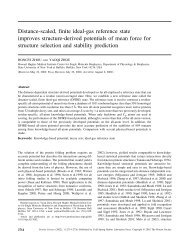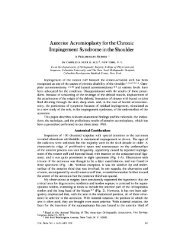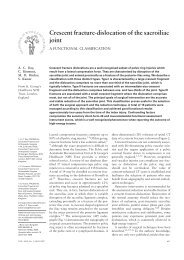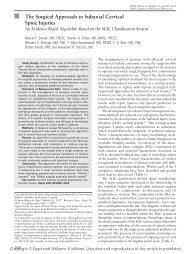Download Residency Training Program PDF - Ross Eye Institute
Download Residency Training Program PDF - Ross Eye Institute
Download Residency Training Program PDF - Ross Eye Institute
Create successful ePaper yourself
Turn your PDF publications into a flip-book with our unique Google optimized e-Paper software.
ROP Exams. Premature babies being screened for retinopathy of<br />
prematurity are escorted by the front desk personnel directly back to the<br />
exam area. These babies do not need to be examined prior to dilation. As<br />
soon as they are seated, the resident should begin the dilation process.<br />
Instill three sets of one drop of Cyclomydril into each eye, spaced<br />
approximately 5 minutes apart. Mark the time each set of drops was<br />
instilled at the top left corner of the exam sheet.<br />
Exam Lanes. When starting a patient for Dr. Reynolds, the resident<br />
typically uses lanes 3 and 4. Lane 2 is the orthoptic lane, and Kyle will<br />
use that room when she is in the clinic. Dilated patients who are ready to<br />
be re-examined by Dr. Reynolds may be seated in Lanes 1, 3, or 4.<br />
The door to the exam room is usually open during the examination.<br />
However, you may close the door in order to keep the child's attention<br />
focused on the exam, provide the family with some privacy, and prevent<br />
those waiting to be examined from becoming frightened if the patient<br />
begins to cry.<br />
Pupil Dilation. Generally, all new pediatric patients, and those who have<br />
not had a dilated exam in over a year undergo a dilated exam. There are<br />
exceptions, however, and no patient should be dilated unless directed by<br />
Dr. Reynolds. Adult strabismus patients are usually not dilated.<br />
To dilate pupils, instill one drop of 1% cyclogyl in each eye. Some<br />
patients with very dark irises may require the use of 2% cyclogyl. Mark<br />
the time that the patient received the drops on the top left hand side of the<br />
exam sheet. Drops are usually instilled while patient is in the exam chair.<br />
Young children can be cradled in the parent’s arms, with the arm closest<br />
the parent wrapped around the parent’s waist, and the parent holding the<br />
child’s other hand. For larger children who are fighting you, the child can<br />
be placed on the carpeted floor and held down with the help of the parent<br />
and another examiner. If you are having difficulties instilling the drops,<br />
do not hesitate to ask for help. It is better to get the drops in the first time,<br />
even if it takes force, than to have to instill the drops a second time after<br />
the family has waited for 30 minutes.<br />
When administering drops in a young child, never try to catch the child off<br />
guard. Tell the child what to expect, in a quick, matter-of-fact fashion; but<br />
never use the words "hurt", "sting", or "pain", or any other kind of<br />
threatening language. Tell him the drops will "tickle" or feel “funny" or<br />
“cold”. Or tell the child to "count to 20 out loud, and the funny feeling<br />
will be gone". The drops can also be compared to bath or swimming pool<br />
water that gets in the eyes. Though it is best to tell the older child what<br />
26
















